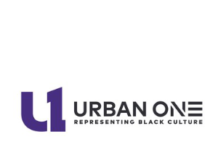
(By Gabriel Barnes) At what point did we stop providing real marketing solutions that provide measurable ROI for our clients, and begin to focus on doing whatever it takes to hit our sales budgets?
I have sat in numerous sales meetings and been on countless sales calls, and it seems that the words “return on investment” are forbidden. Why is that?
When it comes to advertising on the radio, most would agree that the most important factor in the success of any campaign is the creative message itself. Yet the thought of having a copywriter on staff is so foreign to us — it’s just an unnecessary line item in the budget. Why bother paying a copywriter when commission-only sales reps do that job at no additional cost?
Unfortunately, that line of thinking remains common among media companies that are now selling digital assets — they are focusing on what provides the highest margins at the expense of what is in the best interest of the clients.
One of my biggest pet peeves is watching media reps sell digital just like they would sell a radio schedule.
What I mean by this is that the default service offered is impression-based display advertising packages, because that’s what best correlates with how radio works. But unlike traditional media, digital is a data-driven channel where advertisers are able to see in real time the ROI of any campaign.
Display ads are sold first and foremost mainly due to the margins (some groups are marking up as much as 400 percent). The station wins, and the reps win, but what about the client? It is time for us to think differently and become marketing consultants for our clients. Otherwise we risk winning in the short term, but losing in the long term.
When your reps sit down with local businesses, they should always ask them questions about the challenges they are facing — not just from an awareness standpoint, but what factors into the consumer’s consideration of the client’s product or service, and ultimately, what gets that consumer to convert and buy. That’s how you determine what to present to the client.
The beauty of digital marketing services is that there are a number of options best suited for addressing specific needs. If a business needs help in creating awareness, you have options, and if that same business needs help with conversions and sales, you have a number of other, very different options at your disposal.
So where does each digital service belong in the advertising funnel? Here is a simple breakdown: Awareness: display advertising, social media, SEO/PPC/Engagement/consideration: blogs, social media, reviews, site re-targeting, SEO Conversion: site re-targeting, SEO/PPC, social media ads, e-mail marketing.
If you find during your client needs analysis that your client needs help with getting immediate sales, running a display ad campaign is not the best solution. The national average for click-through rate on a display ad is 0.04 percent. This means that for every 100,000 impressions, the ad will be clicked only 40 times. With some media companies charging $1,200 for those 100,000 impressions, that is a cost per click of $30. Unless it is a bigger-ticket item, this is not an ideal strategy.
A better solution would be to run a Google AdWords campaign where the client is charged only when someone clicks on their ad. If the average cost per click is $5, the client would generate 240 clicks for that same $1,200 ad spend — six times the number of clicks generated by the display campaign. Your station might only have a 20 percent margin on that spend, but the client gets the ROI they need and will be willing to invest more money with you on subsequent campaigns.
If your stations are to have success with digital advertising, you must have a deep understanding of the advertising funnel and what services are best suited for various points in the customer’s decision-making process. If you start by focusing on generating ROI for your clients, you will put yourself in a better position to make customized media recommendations — instead of simply putting together cookie-cutter integrated marketing packages that rarely work.
Gabriel Barnes is the Managing Director of RevKick – a platform for radio stations to sell ad-targeting services and re-targeting capabilities to their advertisers. https://www.revkick.com






Great recap, thanks. The average biz owner doesn’t understand the differences; explaining new tech honestly only helps all win, long term. Jason (above) is spot on. Yet; As more become aware (consumers eyebrows raised) about ‘tracking’ the positive use of tools like beacons, must be explained & not sold. Ie: A retailer can use beacons only if consumers phones are set for them. Ie: One retail chain uses ad tech to text/notify consumers standing in line for check out; sending an apology on the spot with a coupon, per example. On the spot, real time. We are sorry you have been in line for 10 minutes… It’s a powerful tool ^ only if consumers understand why, how to best set privacy preferences. There is a backlash underway, a perceptive abuse of privacy, this situation is not new. Let’s Face it, tracking can be weird. But done right, we all put an Echo in the kitchen; then another upstairs, soon it’s all going to be built into the walls, smart sockets. Done right, these potential sales are 24/7, and are groundbreaking. Of course it is strange and unknown, at first. But it’s our new reality in life . The industry must intro this right, or the masses will block ads out of their life entirely. Easily. As ‘models’ change so fast.
As a communications guy with some anthropology, Billion $ sales goals & a finance background, in the philly area… For hire wanting to help someone win & innovate! Please Contact ..
Josh, thank you for sharing. To your initial statement on the avg biz owner not understanding the differences:
I would agree with you on this. Unfortunately, many reps are coming from a position that is deemed as trustworthy by the clients; and they end up making recommendations that are in the best interest of their commission payouts. What is sometimes sad to see, as I have sat in a number of upper management meetings, is that the reps aren’t incentivized to truly understand the ad tech landscape.
Great article and you evaluation is spot on. The only point I would add is today it is not about a single product. With digital, a blended approach more often than not works best for your client. It can generate brand awareness as well as the desired comversion at a cost lower than a single product. The approach will not only help your client but at the same time can help margins for the station itself.
Thank you for the feedback, Jason. I 100% agree with your thoughts on a blended approach.